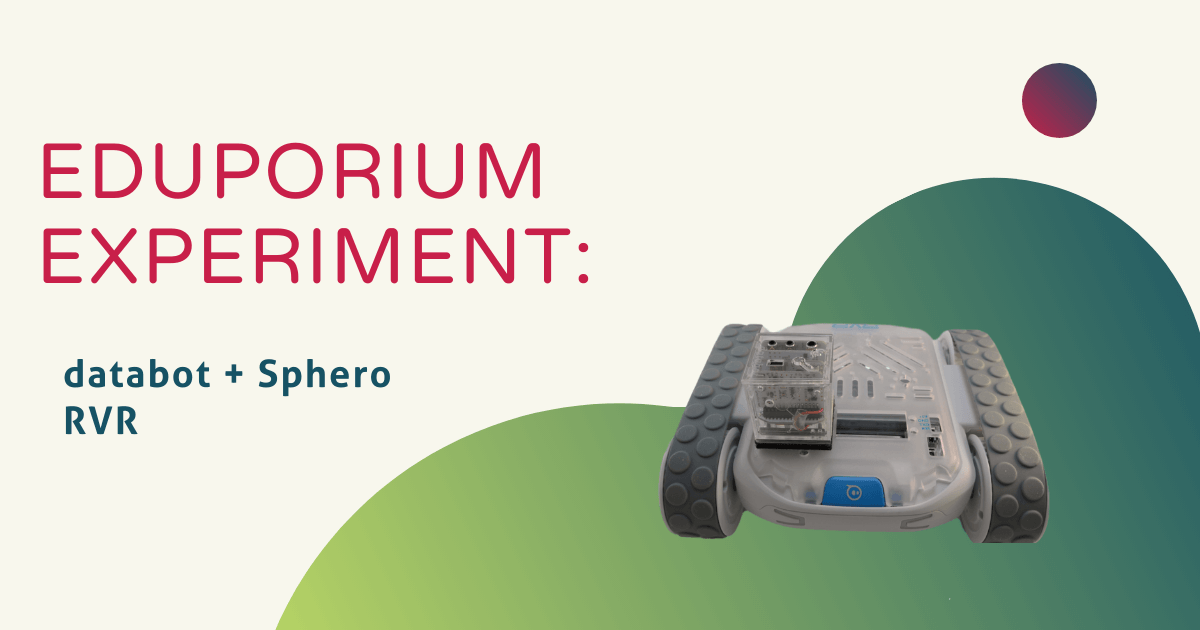The databot is a small, programmable robot outfitted with an array of built-in sensors that are constantly capturing real-world data. Students can then use this data to create increasingly complex programs for the compact, cube-like databot to run. It integrates with Google’s Science Journal platform and it's compatible with another of our favorite STEAM tools: the Sphero RVR! For this week’s Eduporium Experiment, we’re sharing projects that the databot team has done by combining the databot and the RVR, including using its temperature sensor, air pressure sensor, and more!
The following was originally posted on the databot website. We have repurposed the content below.
The awesome team from Sphero was kind enough to let their latest hot rod family member, the RVR, come over to the databot‘s place to play. It turns out the RVR is one incredible piece of hardware that's very easy to use right out of the box, but power packed for some seriously sophisticated development if students are so inclined. Just like the databot, the RVR is completely hackable and expandable!
Getting started with these databot-RVR activities is simple and fun for educators since no programming is necessary! You will get to conduct exciting, live, data-seeking missions around key science topics, such as physics, environmental studies, and more. The databot and RVR work together with the RVR providing the mobility and the databot communicating real-time data findings to Science Journal from Google.
If you’re using the Sphero RVR in an advanced technology or engineering program, all details to make live streaming data from the databot’s onboard sensors available to the RVR are provided. For the super geeks, this enables autonomous behaviors to be developed based on sensor values that it reads. Very exciting!
To learn more about the databot’s sensors and ports for integrating it with a RVR or other hardware, check out the deep geek documentation on the databot! Read on for instructions on integrating your RVR with the databot and its easy-to-follow format for running Data Science Missions!
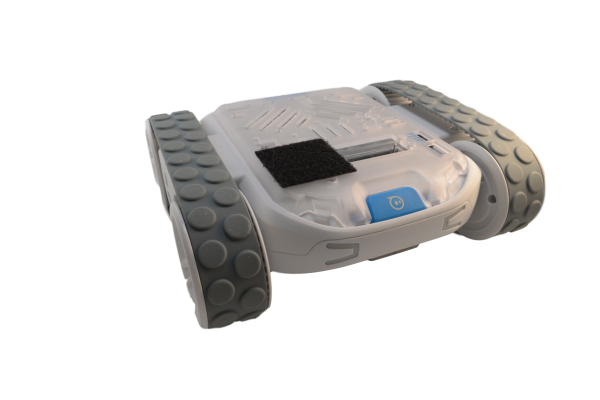
Step 1: Velcro Seat Belt!
For the RVR and databot to come together for joint missions, they'll need to learn to work as a team. And, fortunately, students could help them stick together easily! Your databot comes with a handy-dandy Velcro plate that slides snugly into the provided slot inside the base. A matching piece of Velcro with an adhesive backing comes in the box and students can attach it to all kinds of devices that will range from frisbees to drones. In this case, you can attach it to the RVR as shown.
Note: Use the slotted cover for the RVR so you will have access to the RVR USB port.
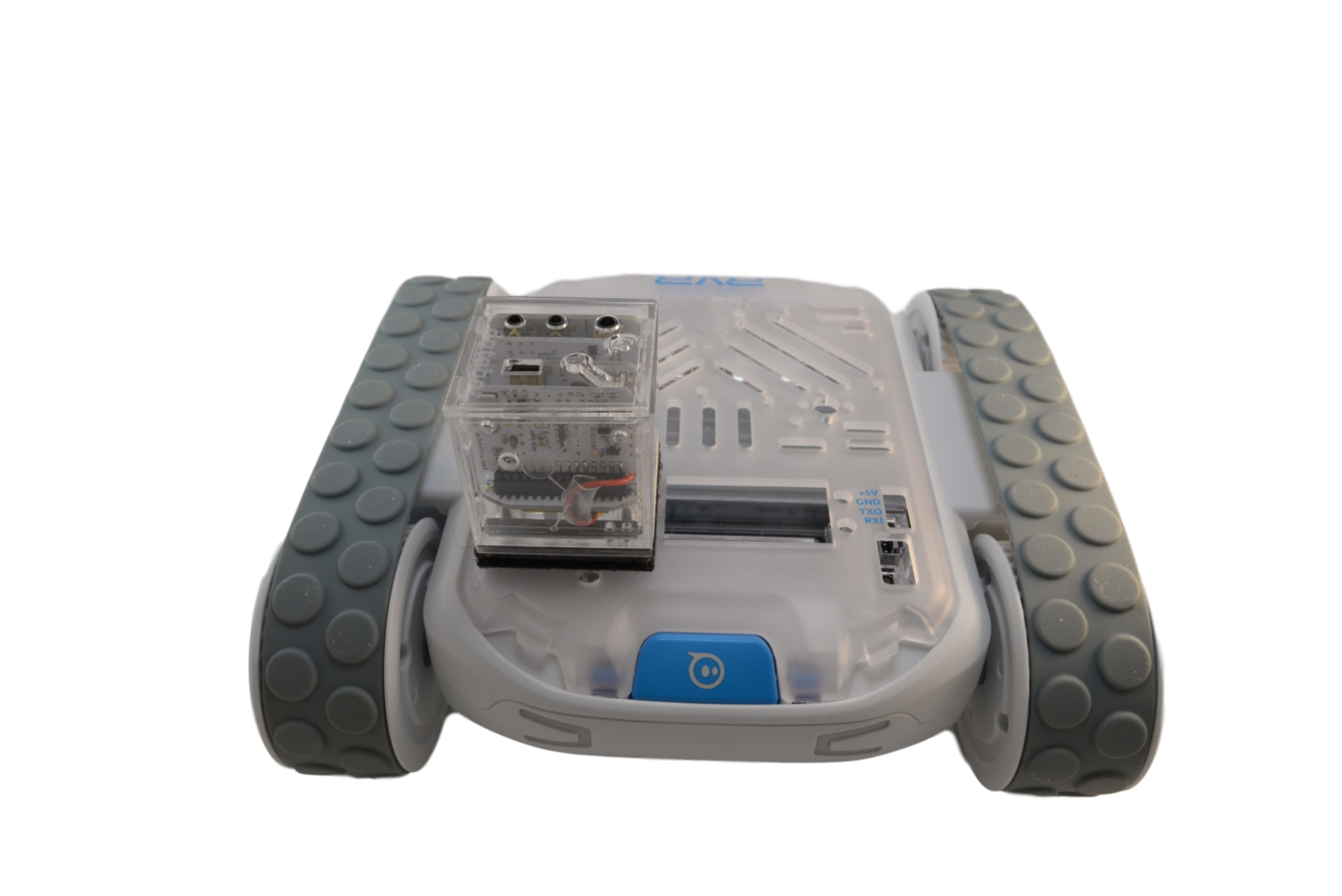
Step 2: Mount Up!
Once you have your Velcro base and the matching patch installed, mounting the databot on board is super easy! Mount the databot forward facing so it orients with its main sensor board towards the front.
Note: Depending on the sensor you are using and specific mission, you may wish to relocate to a different area on the RVR. The Velcro peels off and you can re-position it several times and it retains good adhesion.
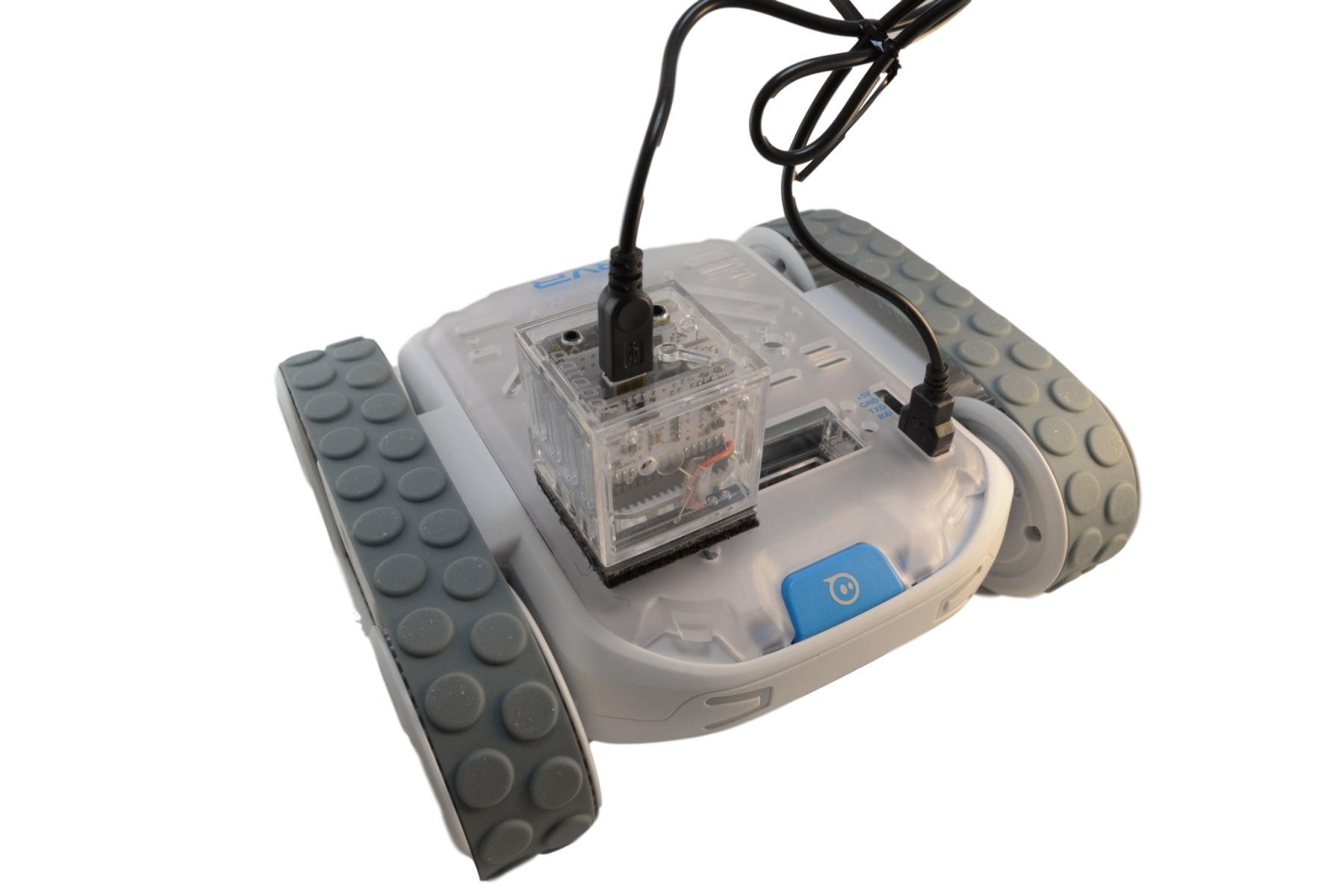
Step 3: Share the Power, RVR, Share the Power...
This step is optional if you will be running missions that require extended periods of use. The databot runs a little over an hour on a charge, so, for short missions, this is adequate. However, if students are planning on doing some serious RVR explorations, having extra power on board is a great option. Simply insert the databot’s mini-USB cable into the RVR’s on-board 5v USB connector and you’ll have power to spare!
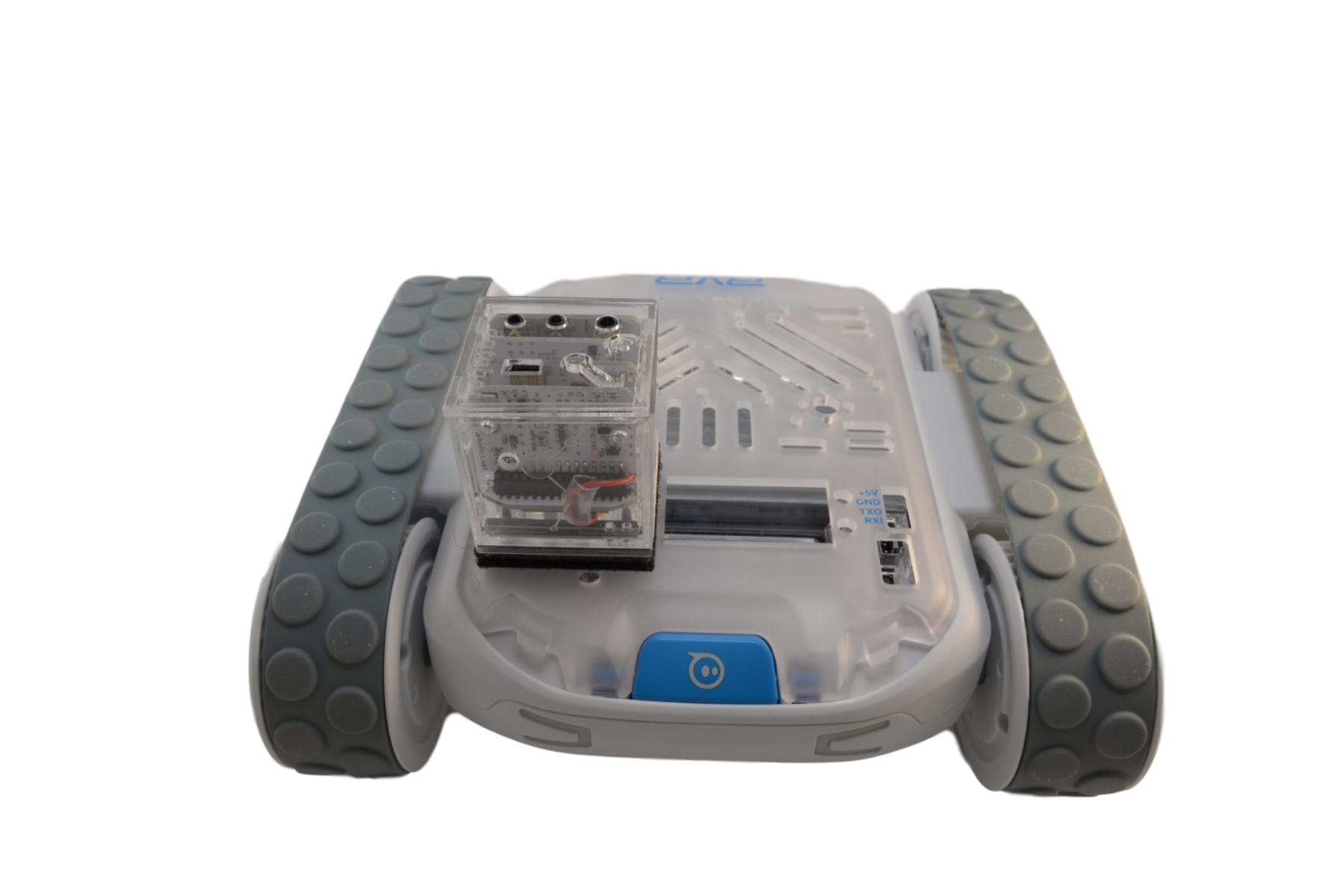
Step 4: Mission Time!
What’s Next?
Getting these two to stick together is easy and now it’s time to do some more scientific exploration. If you haven’t used your databot, your next mission is reading and completing the setup instructions for Google Science Journal. Once you have your remote data collection enabled using Google Science Journal, your RVR-databot combination becomes a mobile search and experimentation platform capable of many tasks.
Using the environmental sensors, for example, you can hunt for any CO2 and VOC emissions. You can also conduct remote studies for physics by recording acceleration figures, angular velocity, and more. Also, with 12 various on-board sensors and an external temperature probe, there are many missions and experiments you could perform and the data is all delivered wirelessly into the Science Journal software. Check out the following overview of how you can conduct team mission challenges using the databot and RVR together.
Mission Setup
Team Challenges—Benefits
Team challenges are an awesome way for students to learn how to work together and collaborate. Working together helps students to develop communication and problem-solving abilities that are critical in the 21st century, regardless of careers they'll pursue. Collaborative learning helps in developing higher level thinking skills. Communication skills. An appreciation for diverse viewpoints. The ability to compromise. Leadership skills. Problem-solving skills.
Team Challenge—Roles
Missions with the databot and RVR make for great 2-person team challenges in which each student has a specific role:
Pilot: This student controls the mission delivery by driving the RVR, navigating obstacles, and strategically planning for efficiency and success. The pilot must also clearly understand all the mission objectives and communicate well with the data scientist to achieve success.
Data Scientist: This student works with the pilot to plan for an efficient and successful mission. As the pilot delivers their databot to the mission target zone, your Data Scientist manages on-board sensors, visualizes mission data in real-time to help guide and refine the execution of the mission, and records the associated data for post-mission analysis.
Team Challenge—Procedure
Divide kids into 2-person teams. They will go through a mission format that includes the following stages:
Discovery and Background: Kids receive background information, which includes important information on the subject and topic. For example, what are Volatile Organic Compounds and why are they significant?
Mission Presentation: In this stage, they're presented with the problem or challenge they will be attempting to solve. The challenge involves some aspect of the background information they studied in stage 1.
Mission Planning: In this stage, students work together, select their roles, develop a hypothesis about what they will discover, and plan how they'll work together to conquer this challenge. A good mission plan might include a clear statement of the team's hypothesis, diagramming, or sketching out potential routes for their RVR, clearly defining the points at which sensor data is collected, what types of sensor data they will need, and the other types of observations they'll use, including notes and pictures. Each team can practice their plan until they can execute flawlessly. A perfect mission relies on good planning, just like in real life!
Mission Execution: The Big Enchilada—it’s time to execute! After they develop and practice a careful plan, the 2-student team gets to execute their plan, collect data and notes, and prepare for some post-mission analysis. Some challenges are also timed, so planning and practice pay off in efficiency and extra points.
Post Mission Analysis: Once students complete their mission, they work together to analyze their findings and prepare a report or presentation of their results including the data collected and other observations to support or disprove their initial hypothesis formed in the planning stage.
Mission Report: Students could also turn their analysis and findings in as a report or design a class-wide presentation depending on the time and preference of the teacher.
We thank the databot team for allowing us to share their content for teaching and learning with the databot and Sphero RVR! We hope this gives educators some insights and inspiration into how these two powerful tools can be used together! If you have any questions about the databot packs or the Sphero Robots, feel free to contact us or browse our store! Be sure to follow us on Twitter and Instagram (and databot, too)!



